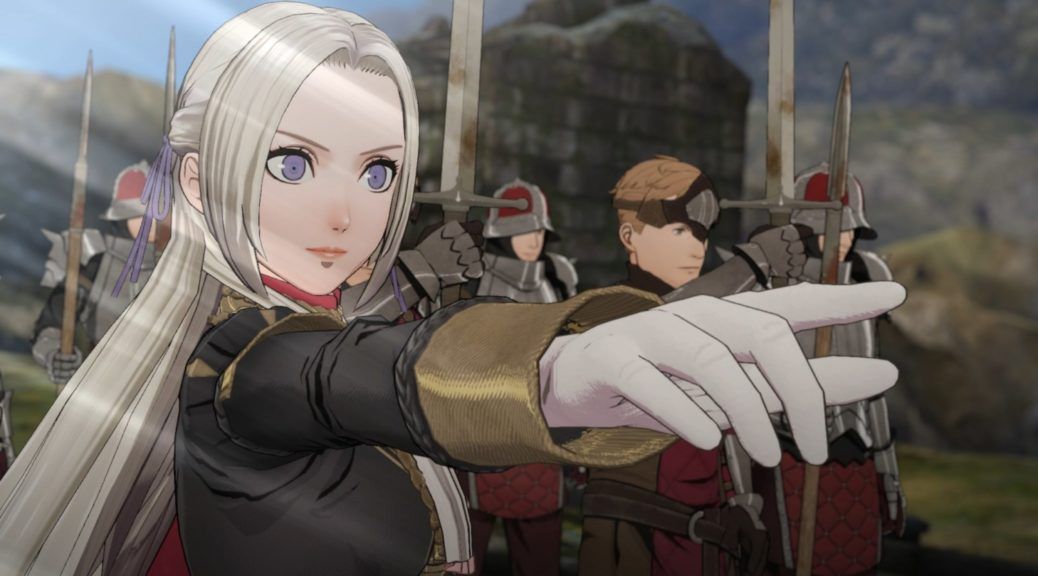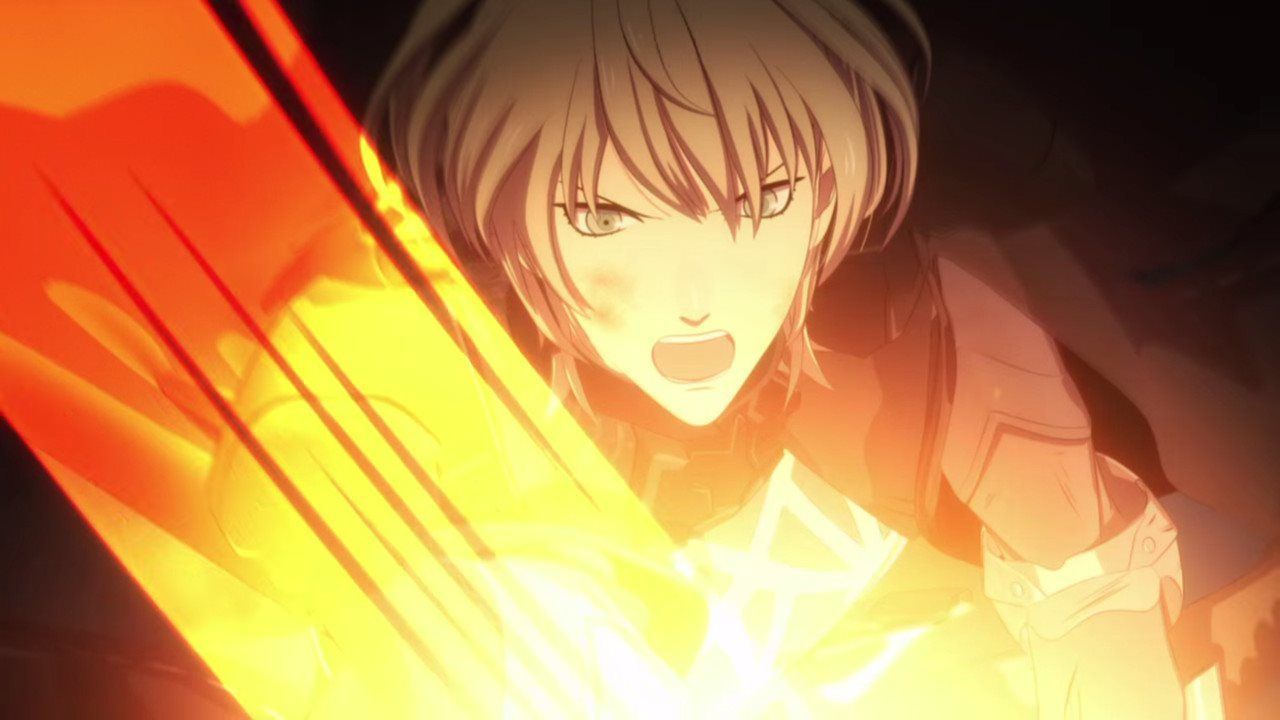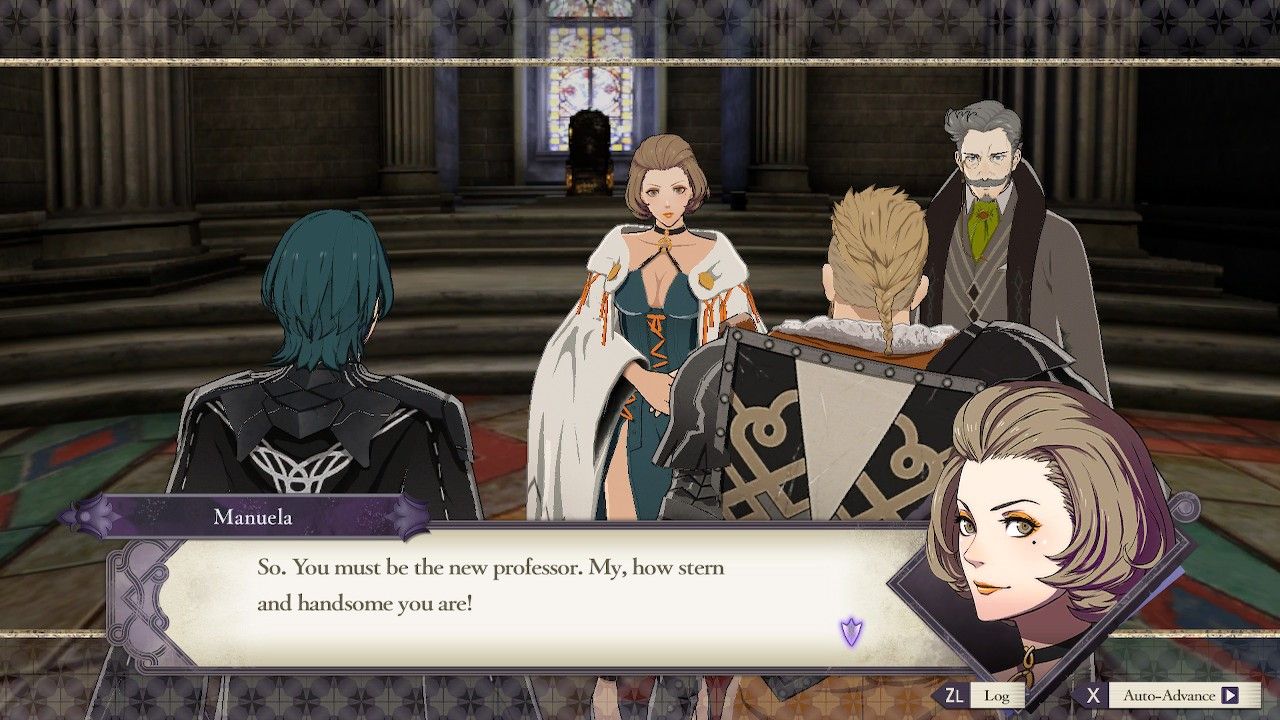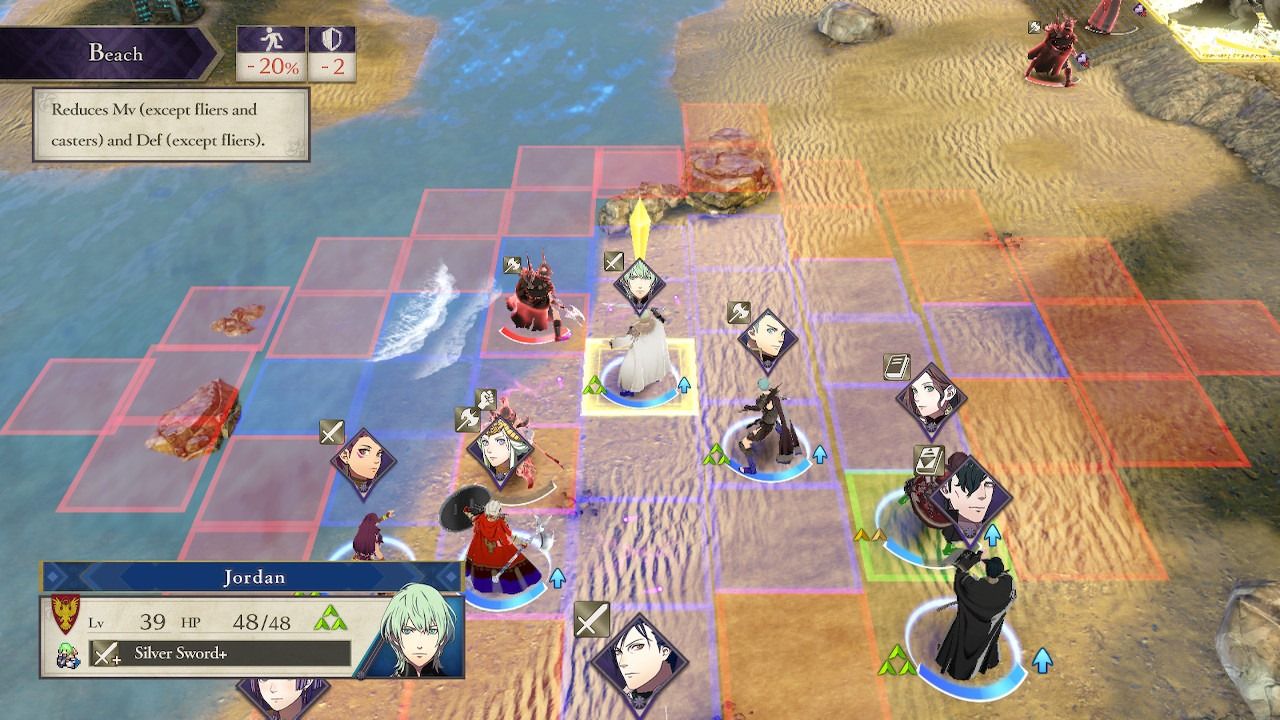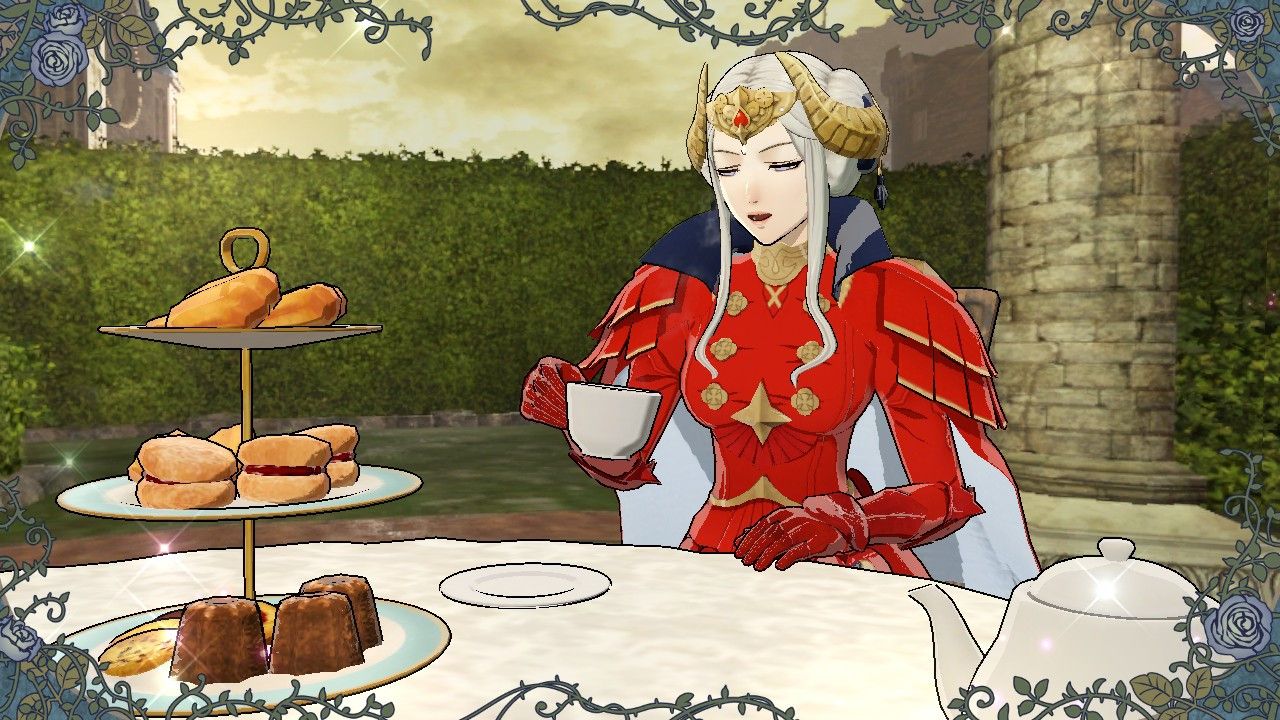Fire Emblem: Three Houses returns to the home console as a dynamically different game when compared to any and all of the other titles in the Fire Emblem series. Many of the gameplay systems that kicked off the series' newfound popularity in the west on Nintendo 3DS have been altered or abandoned in Fire Emblem: Three Houses. It's a risky entry but overall has proven that Intelligent Systems still has what it takes to keep the series fresh and engaging.
The story in Fire Emblem: Three Houses revolves around the land of Fodlan and three distinct houses — the Adrestian Empire (Black Eagles), Kingdom of Faerghus (Blue Lions), and Leicester Alliance (Golden Deer). Each of these is home to a host of expressive characters players will get to know over the multi-hour storyline. At the center of Fodlan is Garegg Mach Monastery, headquarters to the Church of Seiros which simultaneously acts as the chain that keeps the peace across the land and the core religion of Fodlan's inhabitants.
[pullquote]"[Fire Emblem: Three Houses is] a risky entry but overall has proven that Intelligent Systems still has what it takes to keep the series fresh and engaging."[/pullquote]
Players take on the role of Byleth, who encounters the leaders of the three houses and in a convenient turn of events is tasked with dedicating him or herself (based on the player's preference) to teaching and leading one of the three. As a professor to one of the houses, players will have complete control over whichever skills your house's students learn and use in battle. Alongside teaching are the familiar systems that drive Fire Emblem's popular social interactions, but this time around, they're reworked in tandem with developing each character's combat skills.
Fire Emblem: Three Houses' gameplay revolves around a monthly schedule similar to, but not exactly the same as, the later Persona entries. Players will have to become accustomed to allocating their time to various tasks and relationships. All things considered, there's simply no possible way anyone could see everything Fire Emblem: Three Houses has to offer in one playthrough.
During the opening hours of Fire Emblem: Three Houses players will be introduced to a world that's, for the most part, at peace. Dark forces begin to meddle with that peace and the narrative continues to unfold from there. It's hard not to get invested within the world and its characters when everything is so much more player-driven this time around. Certain events that unfold will alter the storyline in pivotal ways and that kind of control gives players all the more reason to become pulled into this world.
[pullquote]"Fans will surely want to go back for more in Fire Emblem: Three Houses to uncover the varying stories and perspectives of every character."[/pullquote]
Your house will face triumphs and heartbreak as the peace begins to crumble. It's as intriguing as it is distressing and offers a newfound meaning to the relationships you develop with your comrades. While one playthrough is definitely a satisfactory experience, fans will surely want to go back for more in Fire Emblem: Three Houses to uncover the varying stories and perspectives of every character.
The earlier sections of Three Houses definitely offer more of its shining moments as opposed to the latter half. Not to say that it gets bad by any means, but once many of the protagonist's decisions have been made, it's pretty clear cut where the story is going to end. Of course, I personally wouldn't know every perspective as I haven't put 200 hours worth of time in to see every route. Nevertheless, it's a commendable feat to offer a storyline with so many connected pieces.
Garreg Mach Monastery's inclusion in the game may be a hit or miss for some recent fans that have grown accustomed to the gameplay loop that Fire Emblem has provided on Nintendo 3DS. The player's home base acts as an explorable open area now with lots of things to do and find. Fishing and gardening allow you to gather different items that'll both help motivate your team members in battle and improve their overall stats. You can cook with students or fellow teachers to improve a specific stat for the entire party for the month or choose various students to have a meal with.
Your professor rank will determine the number of activities you can do in any given day. This will go up as you perform more activities and successfully teach your students. As time goes on Byleth will become a more proficient teacher, giving him or herself access to more activity points to use. There are a lot of fun moments where you can give your students guidance on any issues they're having and it really gives a strange sort of mentor role that I came to really enjoy throughout.
From the getgo, players will have to be mindful about what they do since they can have an effect on the way characters are used in battle. If you're unfamiliar with Fire Emblem, one of the biggest draws of the game is the fact that you can lose a character for good if they die in battle. Of course, the fandom has become accustomed to torturing themselves by losing the characters they love. However, the normal difficulty is fairly easy for about 80 or 90 percent of the game and I found that my characters were oftentimes considerably over-leveled.
Even if someone was to find themselves stuck, Fire Emblem: Three Houses offers a neat new gameplay mechanic that lets you turn back time a set number of times. Once you run out of that power in battle you're at the mercy of whatever the enemy throws at you. You could always also just play on the normal mode where characters will respawn at the end of battles.
Once the end of each month rolls around, you'll be forced to take on a mission that drives the story forward. This is where all of your character training comes together. Battles are mostly familiar in Fire Emblem: Three Houses with some refinements and additions that actually go on to elevate the gameplay further. Fire Emblem: Three Houses' combat works on a grid-based system. Players have two camera options, one of which is more the conventional style while the other zooms in on the action and allows for movement that's more akin to a third-person action game. Battalions are also a new inclusion and they allow you to equip an individual character with a group of soldiers to follow them into battle. These battalions can be used to perform special attacks that'll go on to hamper your enemies movement, while also dishing out some damage, but less than if you'd have simply attacked them normally.
One of the biggest issues in previous Fire Emblem games is the sheer amount of characters. While this isn't an inherently bad thing, it always made it difficult to keep each character evenly leveled throughout the game. With Fire Emblem: Three Houses, this problem is less prevalent due to the fact that you can only have so many students fight for the house you've chosen. But players can also take additional characters into battle as an adjunct fighter who'll offer support to a specific character of your choosing. These adjunct characters will grow in levels, albeit slower than your chosen party, and be ready for the last stretch of more difficult battles at the storyline's end. This system works similarly to the way players could pair two characters together in previous Fire Emblem titles, however, this time around it can be done before a battle begins.
Previous entries in the series have also worked around a triangle system that acts as the balancing of each weapon against another. This feature has been completely omitted in Fire Emblem: Three Houses in exchange for a more nuanced system that's built around the way you build your characters, offering various advantages and disadvantages. Of course, there are still some givens like the fact that flying units still get absolutely destroyed by archers and magic wielders are still strong against heavily armored units. Those constants definitely make sense in this world but the other changes improve a lot of the ways physical weapon users act in battle.
As far as the support system goes, it's built around keeping characters near each other in battle. The only character who can improve relationships outside of battle is Byleth. This can be done through a dating-sim-like tea minigame that can be done with any character. You'll have to talk to them about the right topics to ensure your time with them gains you the most social points. Additionally, you can do other things like answer character-specific questions or learn specific skills from them to enhance your own abilities.
[pullquote]"Fire Emblem: Three Houses is the most refined entry in the series to date when it comes to the systems that matter most."[/pullquote]
Relationships seem more toned down in Fire Emblem: Three Houses compared to the more recent titles. Characters cannot have children with one another and the only one who can develop a marital relationship, again, is Byleth. Furthermore, this doesn't happen until the very end of the game, so the payoff doesn't feel as gratifying. Even with that in mind, the social scenes offer some great dialog between characters that'll be sure to tug at players' heartstrings if they happen to lose one of their more favorable characters in battle.
From beginning to end, Fire Emblem: Three Houses offers an engrossing story that rarely ever loses steam. In more ways than one, Fire Emblem: Three Houses is the most refined entry in the series to date when it comes to the systems that matter most. Whether you're a newcomer or got your start with Fire Emblem in Super Smash Bros. Melee, this is an exceptionally great title and one of the best strategy RPGs ever made.
Fire Emblem: Three Houses
- Franchise
- Fire Emblem
- Platform(s)
- Switch
- Released
- July 26, 2019
- Developer(s)
- Intelligent Systems
- Publisher(s)
- Nintendo
- ESRB
- T for Teen: Blood, Suggestive Themes, Violence

